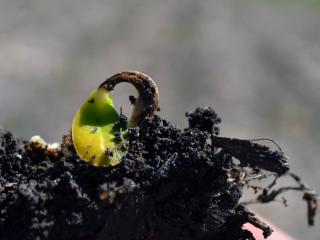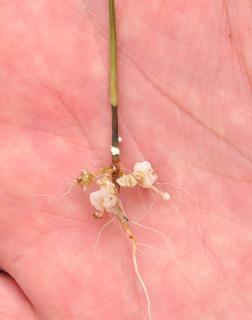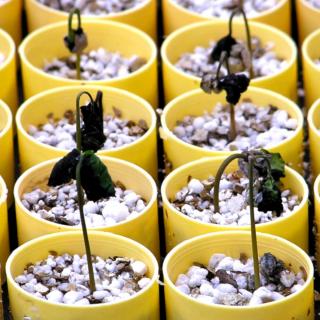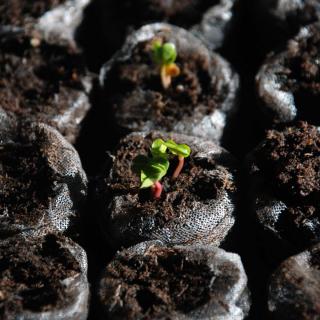

When seedlings die off at an early stage in life, chances are it’s due to fungus.
“Damping off” is the term to describe this infection.
Seedlings collapse, lose their leaves, turn yellow and wither leaving a blackish-brown stem behind. The key is to avoid soggy soil.
Damping off usually occurs before the true leaves appear.

You cannot save seedlings from damping off once the blackish color appears.
However, there is a slight chance of reversing damping off if caught early. If stems and leaves sag and turn pale, the seedling might still recover.
Damping results from fungus attacking and infecting young seedlings. It’s a fungal disease.

The infection spreads quickly through the plant, and in a single day a seedling can go from sagging to dead.
There are five main species of fungus that cause damping off.
Usually the one or the other is responsible, because fungus typically operate on a “winner takes all” basis. Indeed, they’re almost always present in the soil and on leaf and trunk surfaces. The first to colonize a patch of soil or plant will fend off competing fungus.
Fungus flare up when the plant is stressed. Avoid fungus by making sure the environment suits the plant’s needs.
Even in older plants, these fungus still strike, like this infected Sunpatiens, for instance.
Saving seedlings that started damping off is difficult and often unsuccessful.
 Stop watering immediately.
Stop watering immediately.Sprinkle ground wood charcoal over the growing bed. A fine coat is enough, like dust on furniture. You’ll read below why this works.
After that, don’t overwater. Provide plenty of indirect light. Ventilate to make sure soil never gets soggy.
Prevention is the best course of action, since recovering sick seedlings is rarely successful.
Avoid overwatering. It’s the most important factor.
Outdoors, if the weather is very wet for days, protect seedlings from rain with a tarpaulin or piece of plastic hung above the growing bed.
Make sure your seeds come from a good source. They shouldn’t have molds growing on them. It’s possible to disinfect them before planting.
Only use old, mature compost to enrich soil directly in your seed holes. Any pure, fresh manure or compost should be at least 4 to 6 inches (10 to 15 cm) away from your seedlings.
Such fresh material attracts aggressive fungus. Not to mention that having too many nutrients around might burn your seedlings, too.
When recycling old potting soil, sterilize it completely in an oven (two-three hours at around 400°F or 200°C).
Another technique is to populate the soil with beneficial fungus. They’ll out-compete bad rot-inducing fungus and protect your plants.

There are two ways you can use it:
→ Relevant: 3 natural tips against damping off
These fungus are especially aggressive against fresh sprouts that haven’t yet developed a strong immune system. Almost all species can be infected when young.
On top of that, the seedling’s structure isn’t yet very marked: root, stem, and cotyledon leaves are more or less a continuous organ. On the contrary, more mature seedlings have clear “borders” between root, trunk and leaves. These serve as biological barriers to slow fungus spread in older plants.
Prepare several trays when sowing, because the disease has trouble spreading from one tray to the next.